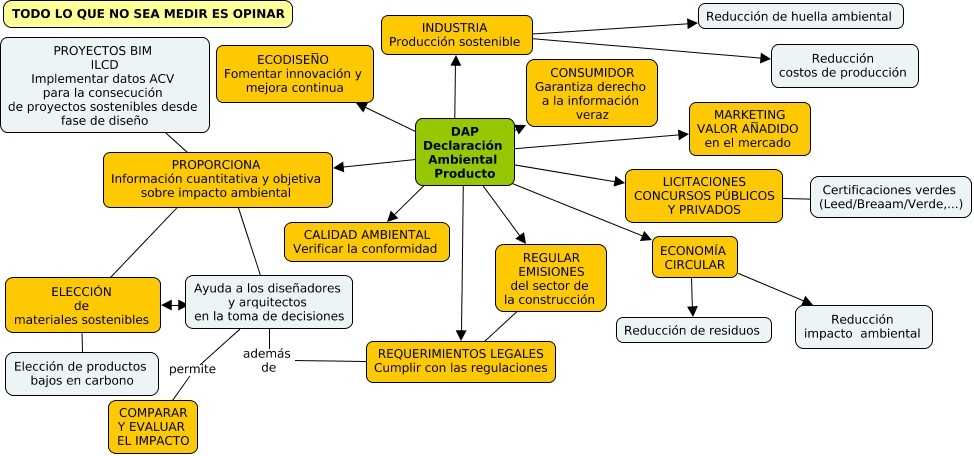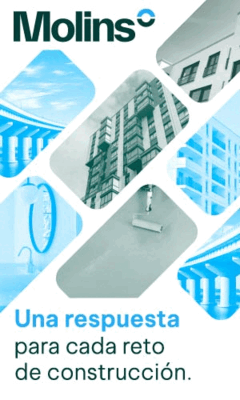Essential instrument for environmental improvement in the construction sector
They provide quantitative information on the environmental impacts of a product
They are a tool to respond to legal demands in a global world
What are DAPcons®?
Environmental Product Declarations (EPD) provide quantitative information on the environmental impacts of a product throughout its life cycle. They are known as “Eco-labels” type III. The information contained in an EPD is based on the life cycle analysis (LCA) of a material or system: energy consumption; resource depletion; water consumption; solid waste; climate change; atmospheric acidification; air and water pollution; ozone layer depletion; photochemical ozone formation…
The DAPcons® are based on various ISO guidelines and have been developed since 2000. In Europe, based on the mandate of the European Commission for the development of standards in the field of sustainability in construction works, they have been developed in countries such as France, Germany, Sweden, the UK, the Netherlands, Finland, Norway and Spain. In other countries outside the EU, such as the USA, Canada, Japan and Korea.
EPDcons® are Environmental Product Declarations for Construction and are a useful instrument for environmental improvement in the construction sector and for compliance with national and international legislation.
There are also sectoral DAPcons®, which show the average values of a product with similar functional characteristics. These will be particularly useful for the technician in the first stage of a project where the environmental impact of a typical product needs to be known without knowing the exact model or brand.
Environmental Product Declaration for Construction Products
The following video explains what Environmental Product Declarations, also called EPDs, are.
What is a DAPcons® for?
Environmental Product Declarations for Construction (DAPcons®) are an essential instrument for environmental improvement in the construction sector and therefore a useful tool for technicians, manufacturers and users. DAPcons® certifications cover products from the different stages of a building. They provide objective, agreed and verified information on a product.
For technicians and professionals
The DAPcons® make it possible to quantify the impacts of building components and to choose the most environmentally friendly products. The key role to be played by the technician in the study of the environmental impact of buildings during the design, construction, use and end-of- life periods is decisive in reducing emissions linked to the construction of buildings.
For manufacturing companies
The DAPcons® are a tool to meet legal requirements in a more competitive global world. They provide added value to the product and an objective method of quantifying the environmental impact of the manufacturing processes of construction products. Carrying out a Life Cycle Assessment (LCA), which is essential to obtain a DAPcons®, allows companies to significantly improve their processes and make significant economic savings.
For users
DAPcons® provide greater transparency and a good understanding of the overall impact of a building during its life cycle, allow objective criteria for the sustainability of a building to be established and strengthen a valued label, which is what the end-user needs.
For administrations
The DAPcons® are requested and valued by administrations as the products contain homogeneous information about their environmental impact and help to have more information about the building.
Affiliated organizations and registered products
All manufacturing companies that want to achieve immediate or future environmental transparency of their products, reducing the environmental impact associated with the life cycle of buildings, can be Members of the DAPconstrucción® Program.
DAPcons® have a defined validity period of 5 years. If during the validity period changes occur at a technological level that may lead to a variation in the environmental impact in the range of 5-10% of the product affected by the DAPcons®, the organization must inform the administrator and launch its review.
Official documents
The DAPcons Programme is updated to the new UNE-EN 15804:2012+A2:2020 ‘Sustainability of construction works – Environmental product declarations – Basic standards for the construction product category’. This standard is responsible for the development of standardised horizontal methods for the assessment of the sustainability of new and existing construction works; and of standards for the environmental product declaration (EPD) of construction products.
The documents governing the DAPconstrucción® Programme:
General Programme Instructions
The General Instructions of the Programme (IGP) establish in a clear and orderly manner, the criteria, the normative bases, the objectives, the procedures, the participating agents, the quotas, as well as the rest of the documents that make up the programme.
General Programme Instructions
Product Category Rules
The development of a DAPcons® is based on the application of guidelines on how the Life Cycle Assessment (LCA) of the product in question should be carried out. These guidelines are called Product Category Rules (PCR).
The Product Category Rules (PCR) set out the requirements and guidelines to be followed in developing the environmental product declaration, including the corresponding life cycle analysis study, which may vary according to, for example, the function of the product, the incorporation of recycled material or the complexity of the production process.
Product Category Rules (PCR) can be:
- Developed by the DAPconstrucción® Programme
- National, European or international technical
- CPRs issued by an internationally recognised Programme
They have now been developed and are current in the DAPcons® Programme:
- CPR for construction products in general. Valid for any type of construction product, according to the national and international standards that govern them, or according to the documents provided; ETA, DIT, DAU or any other accepted in the current legislation (in this case the programme administrator must expressly authorise the use of such a document as a reference).
For specific CPRs, please contact the programme administrator.





